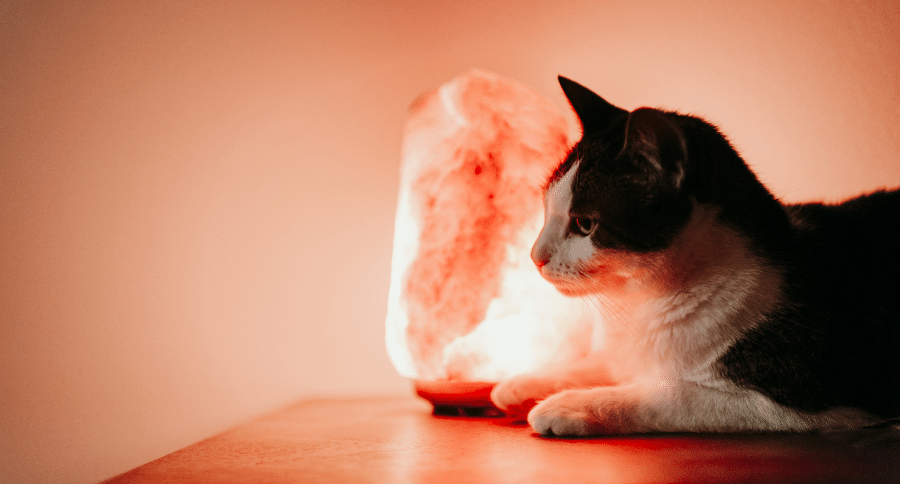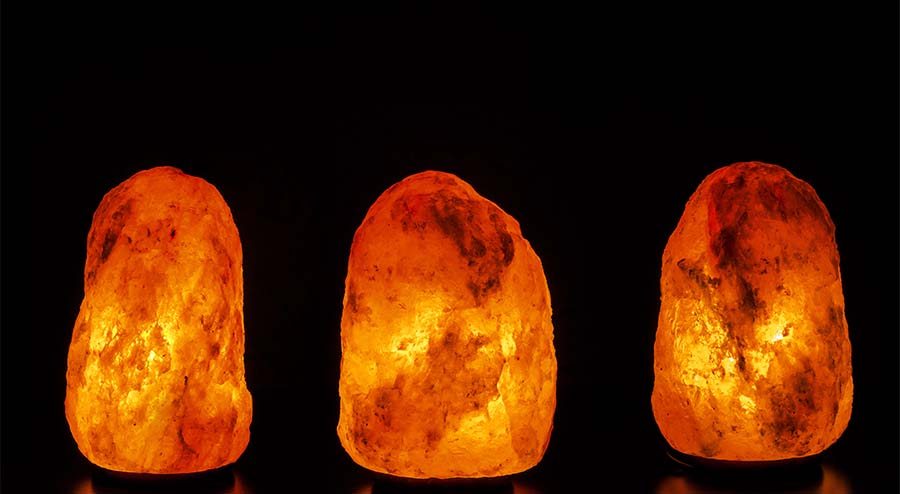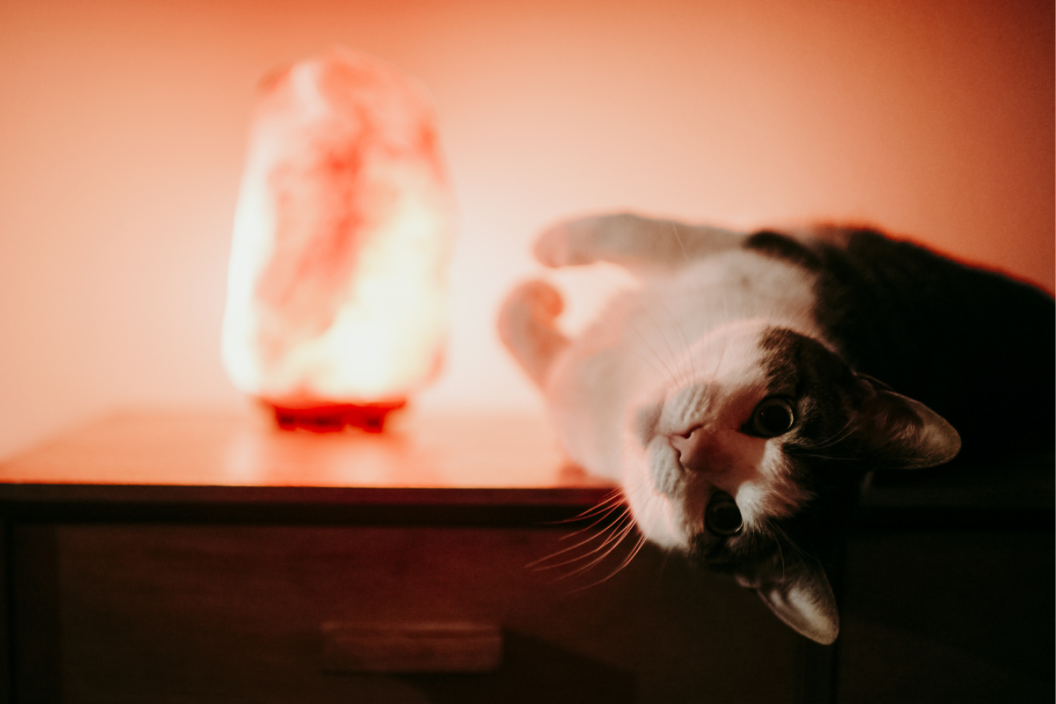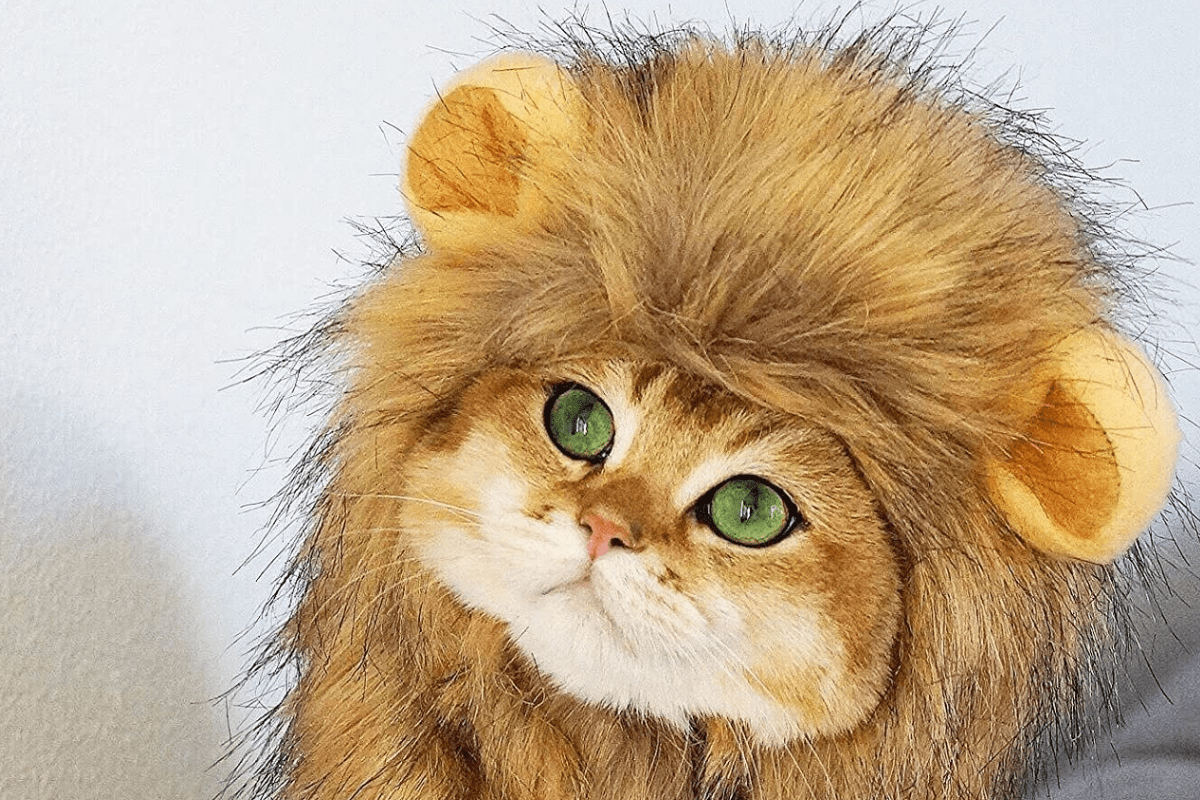If you have a salt lamp in your home, your cat's life could be in danger.
All cat and dog lovers need to understand the danger that Himalayan salt lamps pose to their furry friends. These lamps have many health benefits for humans and animals, but veterinarians warn that the salt content on the lamps can cause major health issues and neurological problems for your furry friends. This is especially true for cats, who can climb up onto tall locations that dogs cannot reach.
What Are Himalayan Salt Lamps?

If you enjoy the ambience from the natural Himalayan salt crystals, you're not alone. Salt lamps are all the rage, and they most often come with a dimmer switch and a wooden base. They live on nightstands and other areas of the home to combat things like seasonal affective disorder, and low energy levels. It also helps people soak up positive air ions, if you believe that sort of thing to be true.
These lamps, made out of giant hunks of pink Himalayan salt, are reported to have various health benefits such as improving sleep, increasing blood flow, and even easing the symptoms of asthma or allergies. Most of the salt is mined in Pakistan, and is the same as table salt in most cases.
According to Mindbodygreen.com:
"Himalayan salt lamps act as an air ionizer, spreading negative ions that can help counteract and neutralize this radiation. In combination with spending time in nature, using a Himalayan pink salt rock lamp could help balance positive and negative ions."
Some pink salt crystals are mined in the Himalayan mountains or New Zealand, and can be more expensive depending on location of origin. Essentially the rock salt lamp detoxifies the air and creates a sense of balance via water vapor.
Why Are They Dangerous For Pets?

While your salt lamp may have health benefits for you, it could actually jeopardize your cat's life. It's better to pick up a normal lamp for that spare light bulb you have around. Pet owners should be aware that too much salt is poisonous for both dogs and cats. Salt poisoning can cause serious symptoms in your pet, like vomiting, diarrhea, seizures, lethargy, neurological signs, and even death. This is another good reason not to let your pet snack on potato chips. Now, cats and dogs do need some salt, in moderation, to keep their bodies functioning. However, the recommended maximum daily salt intake for a cat is 16.7 mg.
Salt lamps are trending and a part of common home decor for many cat-friendly homes. They provide a light source, but how exactly do they work? Fans of Himalayan pink salt lamps claim that the negative salt ions released by heating are part of salt therapy. These crystal salt lamps can increase levels of serotonin in the brain. They also release a soft pink glow and act as air purifiers to help with overall air quality. The underlying theme for these electrolyte, ruby crystal lamps is wellbeing as they provide a natural calm for those near them.
How Can Pet Owners Prevent Injury To Their Furry Friends?
The problem is that salt lamps are often kept in areas that cats can access. A dog isn't likely to hop up on a table to check out your salt lamp, but your cat just might. Cat owners have found their cats licking their salt lamps, and it's entirely possible for a cat to ingest more than the recommended daily maximum of salt by licking a lamp, leading to sodium poisoning. Your dog may also attempt to lick the salt lamp as well, and can also suffer from salt toxicity.
Will Your Cat Automatically Get Salt Poisoning Because of Your Salt Lamp?
Will your cat automatically get salt poisoning because of your salt lamp? No, but it's important to be aware of this risk, especially if your cat is the curious type who likes to check out new objects in your home. It's best to position your salt lamp so that it's out of your cat's reach, or keep it in a room that your cat doesn't have access to.
Don't use these in your bedroom if your cat sleeps there, but instead put this lamp in your living room. The sense of tranquility and the therapeutic glow of orange hues you get from this natural Himalayan salt lamp will reinforce the overall health benefits, but it might work better as a night light to ensure the safety of your cat!
As a side note, those cute salt dough ornaments that you see people make with their pet's paw prints? Also a bad idea. Your pet is likely to lick their paws after you've pressed them into the dough, and they'll ingest a hefty dose of salt. Playdough is a pet-safe alternative to salt dough.
Take this risk seriously and call a pet poison helpline if you notice your pets acting strangely. The health benefits of these natural salt crystals are wonderful but make sure to keep an eye on your feline friend!
If you suspect your pet has salt poisoning, take him to your vet immediately.
For cat toys, visit walmart.com.
Share your sleeping cat pictures on the Wide Open Pets Facebook page!
This post was originally published on September 3, 2020.






